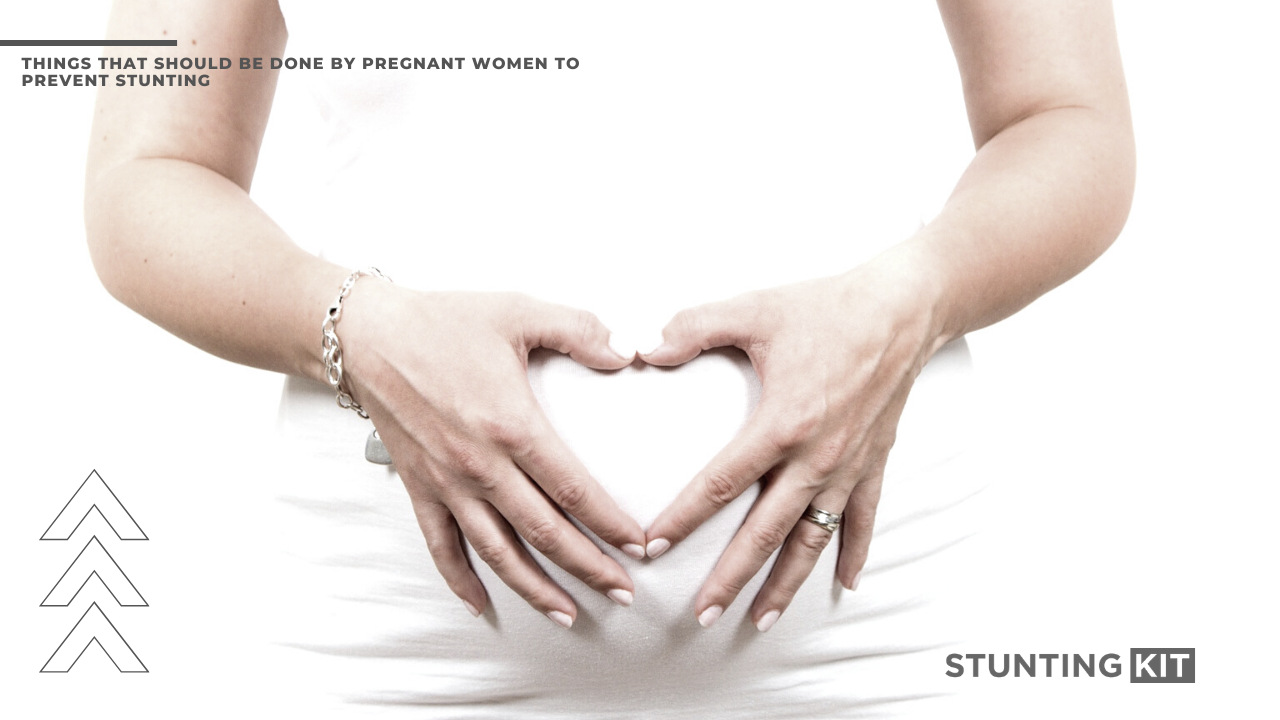As we discussed in the Causes of Stunting in Indonesia, many factors can cause a child to experience stunting. One of the factors of stunting is that 60% of children aged 0-6 months do not get breast milk exclusively from their mothers.
Also, we provide a little information that stunting is also affected by a lack of knowledge of the mother of the importance of maintaining health and nutrition before or during pregnancy.
Because of that, nutritional patterns in the child must be maintained and considered from the first 1000 days of their life (starting from 270 days of pregnancy until the child is 2 years or older) to prevent the child from experiencing malnutrition.
The Importance of Mother’s Role in Pregnancy
Based on the facts that occur in the surrounding community, many mothers are found to be ignorant of the nutritional content for them to digest during the first four months of pregnancy due to feeling nauseous (to vomiting).
Most of them even consume acidic foods to relieve nausea rather than meet nutritional needs both for themselves or for the future of the baby.
Also, some pregnant women are afraid if they have to experience significant weight gain while consuming lots of calories and protein. Weight gain of up to 12 kilograms must be sought for pregnant women (at least, pregnant women need more than 2,100 calories per day).
Nutrition Tables Needed during Pregnancy
To educate pregnant women about the importance of maintaining nutrition for themselves and the health of their children, the following is a list of the nutritional needs of pregnant women each semester from Dr. Bram Pradipto, Sp.OG (quoted from the Kompasiana article):
a. Trimesters 1:
In the first phase namely trimaster 1, it can be categorized into 2 parts; namely at 8 weeks and 12 weeks of the uterus.
In the 8 weeks, the fetus needs folic acid for brain and central nervous system development. To meet the needs of folic acid, the mother can eat green vegetables, asparagus, broccoli, papaya, oranges, and avocados.
In the 12 weeks, the fetus needs folic acid, calories, and calcium. In fulfilling calcium, the mother can consume milk, tofu, tempeh, broccoli, and orange juice.
b. Trimesters 2:
In the second phase, trimesters 2, it can be categorized into 3 parts; namely at 17 weeks, 20 weeks and 26 weeks of the uterus. At 17 weeks of gestation, fetal joints and head movements become more active, thus requiring omega 3 and omega 6. Consuming green vegetables, salmon, tuna, walnuts, and olive oil can be used to fulfill omega 3.
At 20 weeks of pregnancy, the five senses have started working, so that the child can talk to and listen to music. In that phase, the child needs adequate nutrition & zinc by eating chicken, red meat, salmon, spinach and asparagus.
At 26 weeks the womb during which hair begins to grow until the fetus is able to breathe even though the lungs are not functioning, it expects iron content. Iron can be obtained by eating meat, liver, fish, kidney beans, spinach, beans, green vegetables, tomatoes, potatoes, egg yolks, and oysters.
c. Trimesters 3:
In the last phase, trimester 3, it can be categorized into 2 parts; namely at 32 weeks and 37 weeks of the uterus. At 32 weeks of pregnancy, the child’s central neurotic system is more mature and its movements are very active. In this phase, calcium is required for the child’s growth and development.
Then the last, namely at 37 weeks of pregnancy, their lungs have begun to work perfectly, and have been able to call on light, sound, and touch. In that phase, they need balanced nutrition that suits their needs (seen from the baby’s weight).
Besides all that, pregnant women also need additional nutrients in the 270-day phase of pregnancy, like
1. Protein, to produce antibodies for pregnant women and fetuses;
2. Vitamin D, to help the process of calcium absorption and prevent premature birth;
3. Vitamin C, to help the process of metabolism and infant development; and
4. Drink enough water, which is 2000-3000 litres each day
If the child has received attention about proper and appropriate nutrition and nutrition since pregnancy, the child’s parents are just waiting for the arrival of the baby in his small family.
Periodic Post-Birth Anthropometry Measurement
The task of parents in preventing stunting is not limited to exclusive breastfeeding for up to 6 months and providing complimentary food after the birth of the baby.
Parents must invite their children to participate in the Posyandu program so that the child receives immunizations and their development can be checked and monitored; whether the height and weight are in accordance with their age.
To help the anthropometric measurement process that can detect stunting, Solo Abadi offers a special measuring instrument product called the Stunting Kit.
Anthropometric Measuring Instrument for Stunting
In taking measurements to detect stunting symptoms, we provide various tools and packages that suit you. Here are the various Stunting Kit packages that we have:
- Antropometri Kit SK – 92
- Antropometri Kit SK – 95
- Antropometri Kit SK – 96
- Antropometri Kit SK – 98
- Antropometri Kit SK – 99
How to get a Stunting Kit product?
If you are interested in buying a Stunting Kit package from us, you can visit the following link or contact us by pressing the WhatsApp icon in the lower right corner. However, keep in mind that stunting kit products are only available domestically or in Indonesia. Don’t hesitate if you just want to ask for prices or ask for more detailed information about our special products, because we will always serve you kindly.
Let’s Prevent and Detect Stunting Correctly, FAST AND Accurately use a Stunting Kit, Because Preventing Stunting Is Important!


